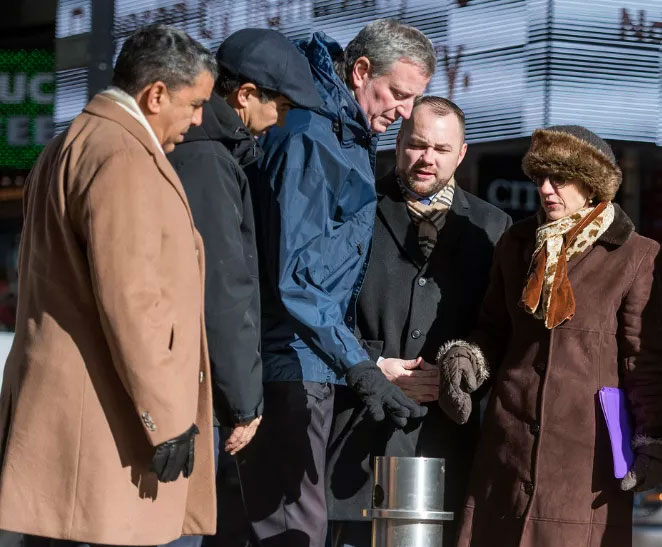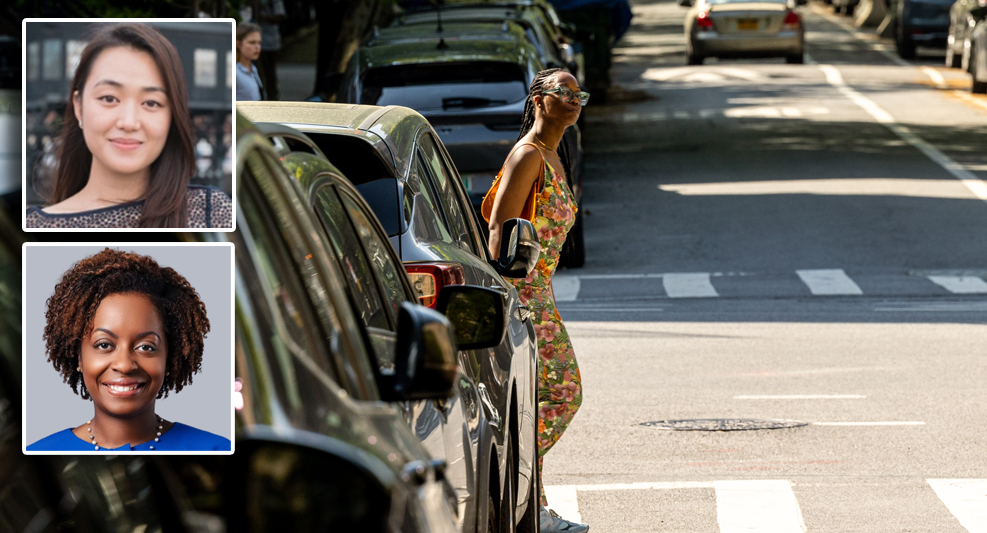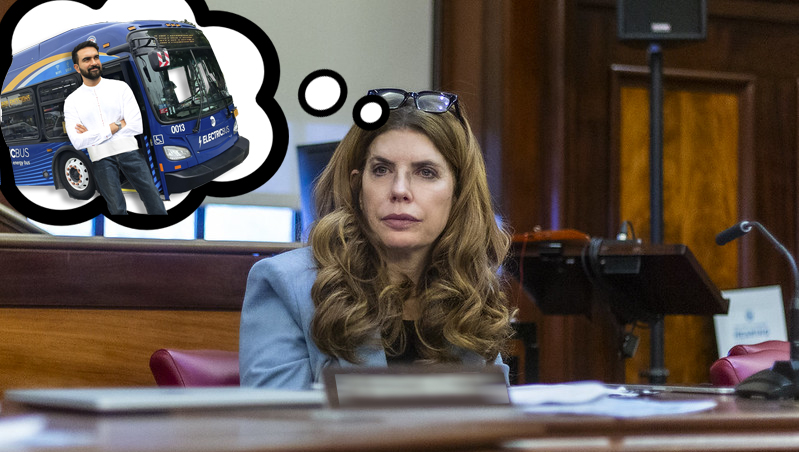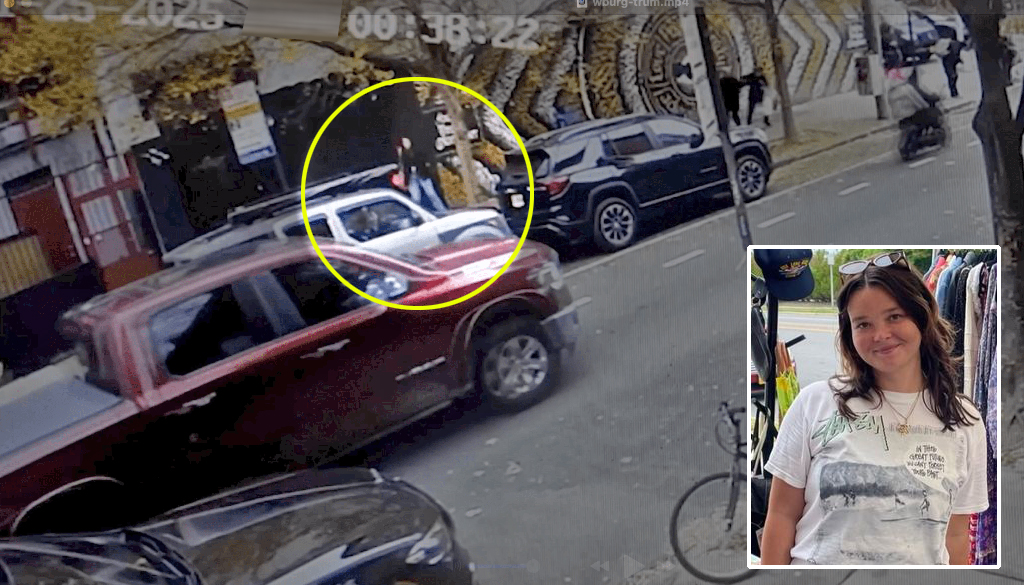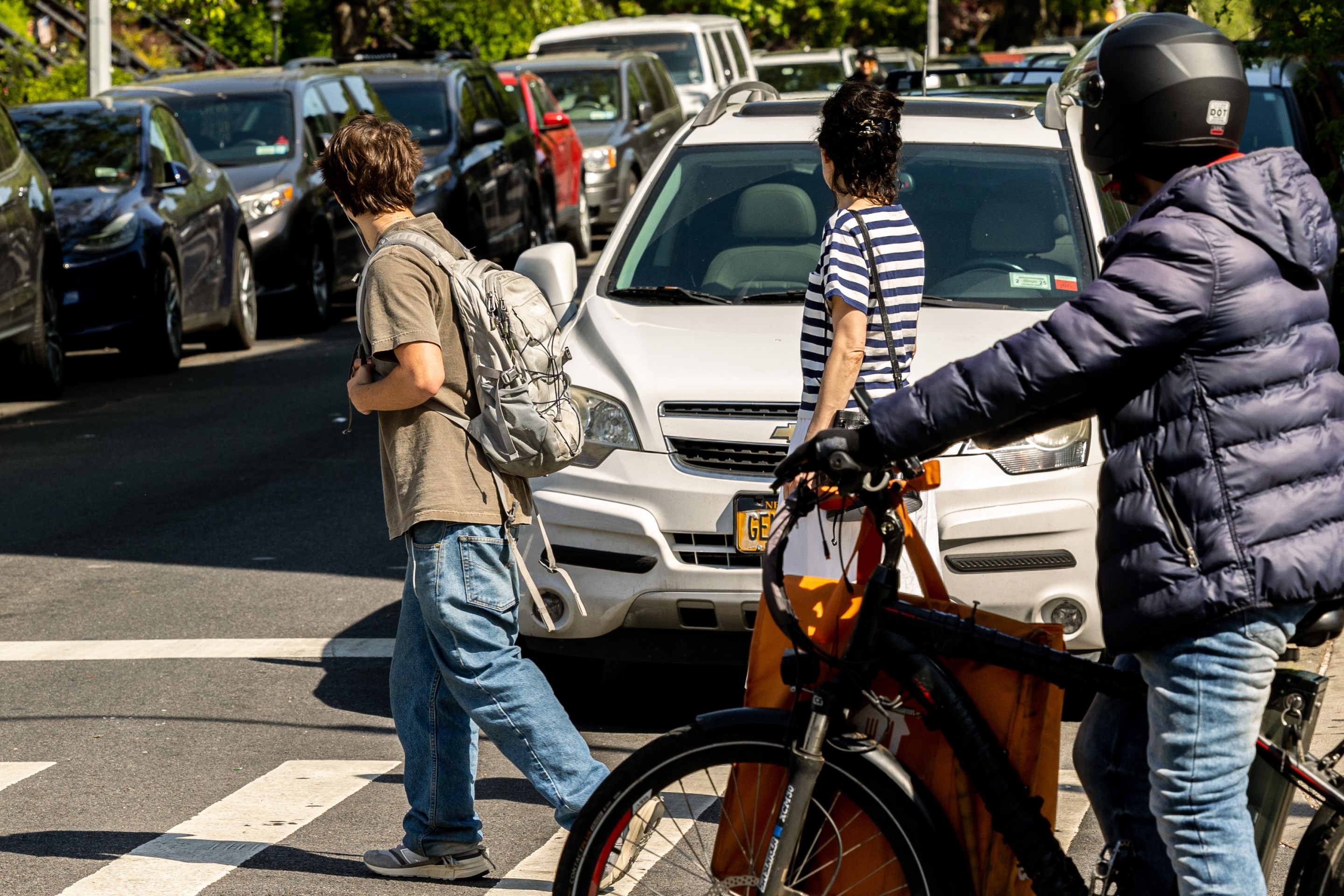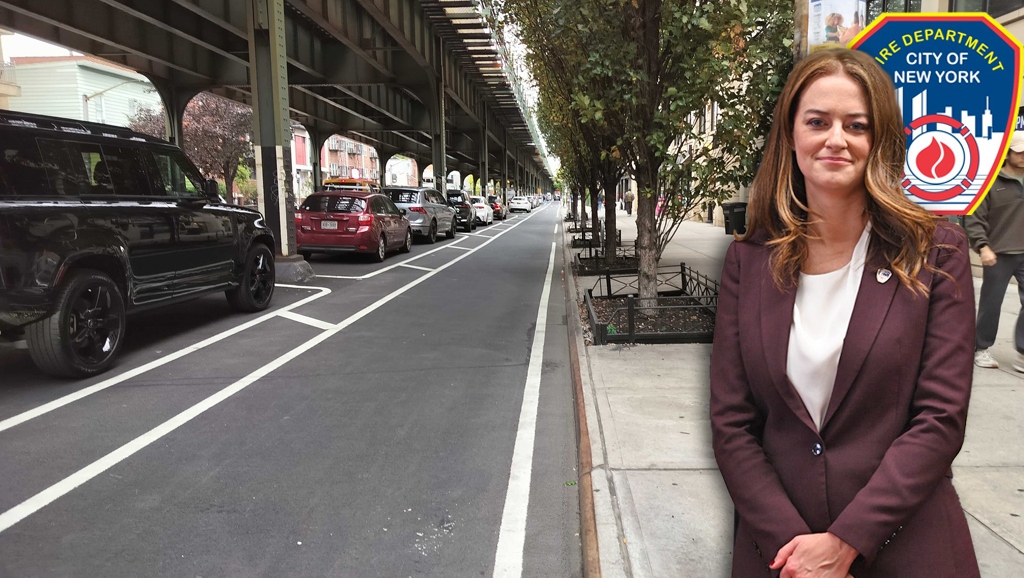City Hall plans to devote more than $50 million to "security infrastructure" at locations with significant pedestrian traffic, Mayor de Blasio announced this afternoon. The full package hasn't been described in detail, but it includes "1,500 new bollards as part of an initial installation phase," according to City Hall's press release.
Speaking at a press conference where he did not field questions, de Blasio said the city is responding to vehicular attacks last May and October. "We understand what's happened around the world, and we even saw some tragedies here," he said. "We know we have to do even more to keep people safe."
A bollard in Times Square helped stop the attacker in May from inflicting more harm on pedestrians. But until now the city has opted for clumsier countermeasures that needlessly disrupt walking and biking routes. Over the fall, NYPD set up metal fencing and concrete barriers on Midtown streets, creating pinch points for pedestrians and blocking access to segments of the bike network.
At Times Square, NYPD fencing, vehicles, and concrete have rendered a block of newly-installed raised bike lane useless. At Herald Square, the Broadway bike lane was severed, with large concrete blocks forcing cyclists to dismount in order to pass through.
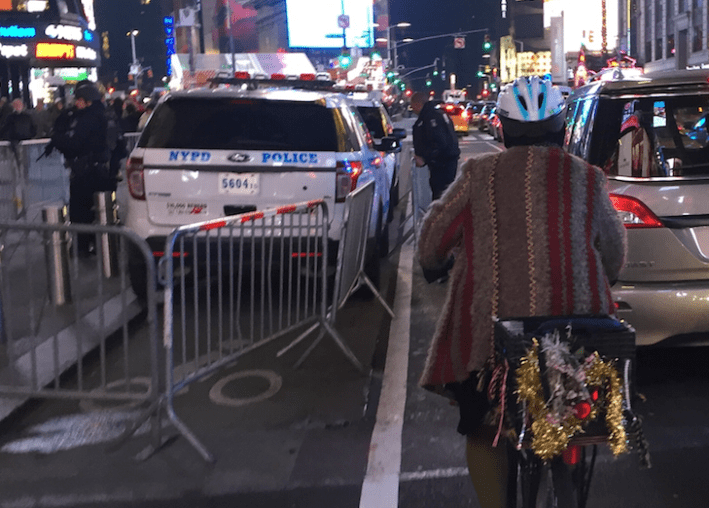
Today the mayor conceded that the temporary measures were far from ideal. He promised that better treatments were on the way.
"We knew we needed long-term solutions, we needed permanent barriers, and that they had to integrate into the life of the city," he said. "They had to still allow people to get around, because these are some of the busiest streets in the world. People have to be able to get around, but they have to be safe at the same time."
Other than the initial number of bollards, details of the plan are scarce. One big question is whether the new bollards will give people walking or biking more freedom of movement, or if they'll consume already scarce sidewalk space.
It's unclear where the bollards will go, whether the plan will involve fully pedestrianizing more blocks, and what the $50 million will cover in addition to the initial 1,500 bollards.
In the coming weeks, the city plans to replace the temporary fencing and concrete with "more attractive temporary blocks" in advance of the new bollards, which will begin installation in March.
